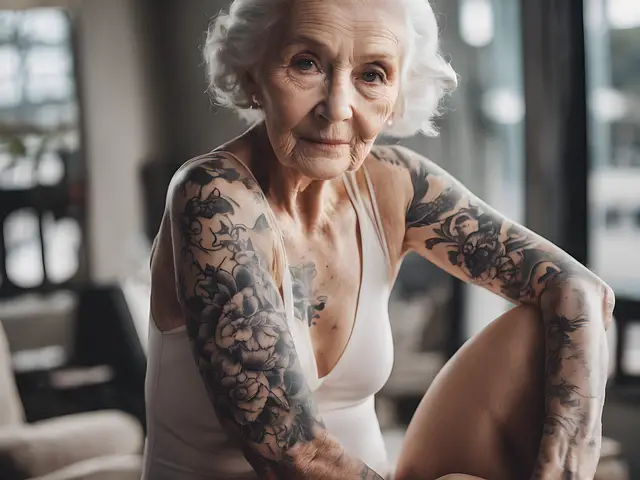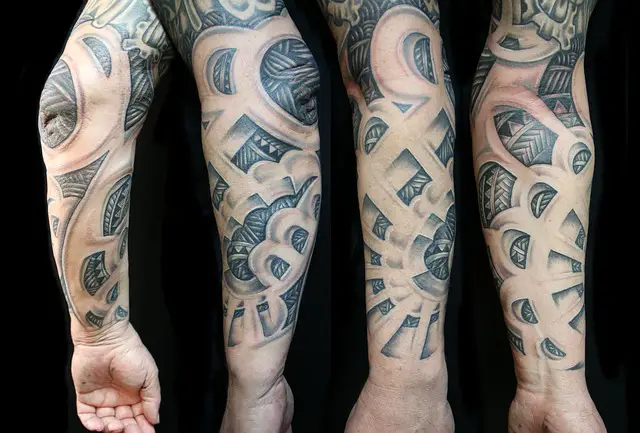Tattoo enthusiasts often encounter a concern during the healing process – the scabbing of their newly acquired ink when applying cream. This phenomenon raises questions about the normalcy of the tattoo healing stages, particularly the occurrence of scabbing.
Question: tattoo scab coming off when applying cream?
In the intricate journey of tattoo healing, several stages unfold, each presenting unique challenges and visual transformations. One pivotal stage is the scabbing phase, typically occurring around 48 hours post-tattoo session. During this period, dry patches and flaking become noticeable, signifying the initiation of the healing process.

Contents
Unraveling the Natural Healing Process
Tattoo scabbing is an integral part of the natural healing process that tattoos undergo. Understanding the mechanism behind this phenomenon requires delving into the intricacies of the tattoo healing journey.
Fluctuations in Skin Barrier: Tattoos involve puncturing the skin with a needle to deposit ink into the dermal layer. This process disrupts the skin barrier, triggering a natural response to repair and regenerate.
Inflammatory Response: The body responds to the tattooing process by initiating an inflammatory response. This immune reaction involves sending white blood cells to the tattoo site to eliminate foreign substances, including excess ink particles.
Formation of Scabs: As the skin heals, scabbing occurs as a protective mechanism. The scabs act as a shield, covering the wounded area and preventing external contaminants from entering. This phase typically emerges a few days after the tattoo session.
Cellular Turnover: The skin undergoes a process of cellular turnover, shedding damaged or dead skin cells. Scabbing is a visible sign of this turnover as the body discards the compromised layers in favor of fresh, healthy skin.
Natural Exfoliation: Scabbing is not a sign of complications but rather a natural exfoliation process. It signifies the shedding of the old skin, making way for the vibrant, permanent tattoo beneath.
While scabbing is a normal part of tattoo healing, proper aftercare, including moisturization and avoiding excessive picking, is crucial to ensure a smooth and vibrant outcome.
When Is Tattoo Scabbing Alarming?
Tattoo scabbing is a normal part of the healing process, but certain situations may raise concerns and indicate potential issues. Here’s an overview of when tattoo scabbing might be alarming:
Excessive Thickness: If the scabs appear unusually thick or hardened, it could signal a problem. Healthy scabbing is typically thin and fragile, facilitating easy shedding during the healing process.
Persistent Redness and Swelling: Prolonged redness and swelling around the tattoo site, accompanied by persistent scabbing, may indicate an inflammatory response or infection. Monitoring these symptoms is crucial to ensure proper healing.
Unpleasant Odor or Discharge: An unpleasant odor or abnormal discharge from the scabbed area could be a sign of infection. Foul smells or unusual fluids warrant immediate attention and consultation with a healthcare professional.
Delayed Healing: If scabbing persists for an extended period, well beyond the usual healing time frame, it may indicate an issue. Delayed healing might be attributed to factors such as poor aftercare or underlying health concerns.
Changes in Color or Texture: Scabs that exhibit abnormal colors or textures, such as green or yellow hues, maybe a cause for concern. These changes can be indicative of infection, and professional advice should be sought promptly.

It’s essential to differentiate between normal scabbing and signs of potential problems during the tattoo healing process. Consulting with a tattoo artist or seeking medical advice is recommended if any alarming symptoms are observed.
Normalizing Tattoo Scabbing
Tattoo scabbing is a common occurrence during the healing process, signaling that your body is responding appropriately to the newly inked skin. Here’s a brief reassurance about the normalcy of scabbing:
Natural Flaking: Around 4-5 days post-tattoo session, tattoos often undergo flaking or peeling, indicative of the skin’s renewal.
Healing Stages: The peeling and scabbing stage, typically between days 15 and 30, is part of the natural progression. Scabs form as the top layer of skin rejuvenates, ensuring the tattoo heals effectively.
Temporary Phenomenon: It’s normal for tattoos to scab and raise a few days after the tattooing process. This temporary phenomenon should not be a cause for undue concern and is integral to the body’s healing response.
Varied Healing Times: Scabbing duration can vary based on factors like tattoo size and shading. Line work scabs may come off after two or three days, while heavier shading may take a bit longer.
The Crucial Role of Cream in Tattoo Healing
Applying cream during the tattoo healing process plays a crucial role in ensuring optimal recovery.
Soothing and Moisturizing: Creams, such as Bepanthen, are designed to soothe and moisturize the tattooed area, preventing it from drying out and promoting a conducive environment for healing.
Aids Skin Regeneration: Creams aid in the natural regeneration of the skin. They provide essential nutrients and hydration that support the healing process, helping the tattooed skin recover effectively.
Aftercare and Protection: Creams, especially those formulated for tattoo aftercare, create a protective barrier that shields the tattoo from external contaminants, reducing the risk of infections and ensuring a cleaner healing process.
Prevention of Dryness: Creams help prevent excessive dryness, which can lead to itching and peeling. By maintaining proper moisture levels, creams contribute to a smoother healing experience.
Conclusion: tattoo scab coming off when applying cream
Experiencing tattoo scabs coming off when applying cream is a normal part of the healing process. As scabs form, it’s crucial to resist the urge to pick or scratch, allowing them to naturally fall off. Proper aftercare, including the use of recommended creams, accelerates healing and minimizes scab-related complications.

Understanding that scabbing is a protective mechanism, providing a shield for the healing tattoo, reinforces the significance of patience during the recovery period. The insights from reputable sources emphasize the need to avoid disrupting the scabs, which can alter the appearance of the tattoo.
In conclusion, the journey to a well-healed tattoo involves diligence in aftercare practices. Adhering to the guidelines from tattoo artists and using appropriate creams fosters an environment conducive to optimal healing. Remember, some scabbing is expected, and embracing this natural process ensures not only a beautifully healed tattoo but also a lasting piece of art.
what age can you get a tattoo?
How Can I Make My Tattoo Less Painful? The Best 8 Tips
Can Tattoos Last a Lifetime? The Best Guide to Tattoo Longevity in 2023




